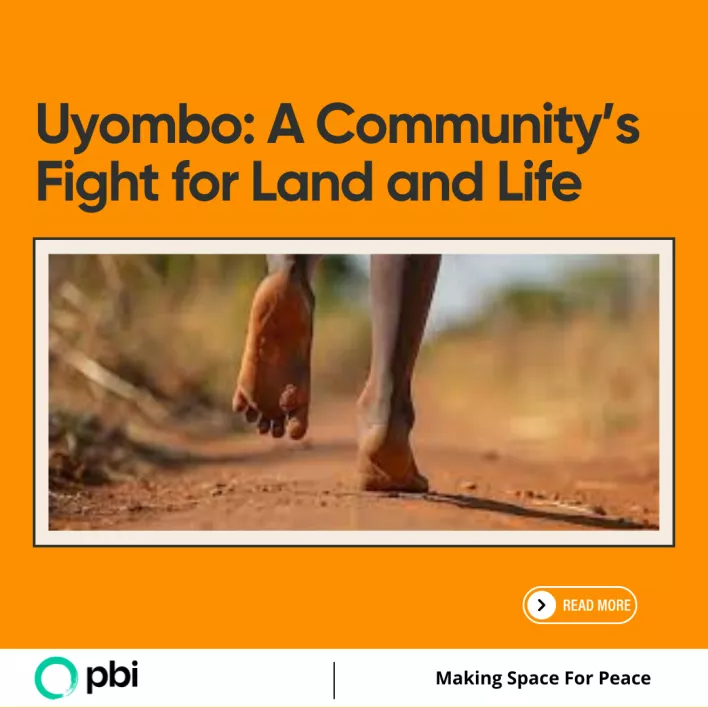
In the heart of Kenya’s coastal splendor lies Uyombo, a gem of Kilifi County, where the Indian Ocean’s turquoise waves meet pristine white sands. This serene enclave, flanked by the Watamu National Marine Park and the Arabuko-Sokoke Forest, is a haven of natural beauty, attracting tourists with its lush coconut palms, vibrant coral reefs, and abundant wildlife. Yet, beneath its tranquil surface, Uyombo is embroiled in a fierce battle to protect its land from a looming threat: the proposed construction of Kenya’s first nuclear power plant.
Uyombo’s coastline is more than just a picturesque backdrop for holidaymakers; it is a vital part of the region’s ecological and economic fabric. The coral reefs that stretch along the shore are teeming with marine life, from the dazzling colors of ornamental fish to the majestic presence of whale sharks. The nearby Arabuko-Sokoke Forest, a UNESCO Biosphere Reserve, adds to the area’s rich biodiversity, sheltering countless species of birds, insects, and rare plants. This forest is a critical component of the region’s ecosystem, offering a sanctuary for wildlife and serving as a buffer against climate change.
The proposed nuclear power plant, announced in August 2020, represents a dramatic shift in Kenya’s energy strategy. The government aims to use nuclear energy to address the growing demand for power, reduce reliance on hydroelectric sources, and lower carbon emissions. With a projected capacity of 4,000 megawatts, the plant is intended to be a cornerstone of Kenya’s energy future. However, the decision to site the plant in Uyombo has ignited intense opposition from local residents and environmental advocates, who fear that the project will irrevocably damage their home and livelihoods.
For the people of Uyombo, the fight to protect their land is not just an environmental struggle; it is a deeply personal battle. The community’s connection to their land is profound, intertwined with their daily lives and cultural heritage. The pristine beaches and lush forests are more than natural assets; they are symbols of the community’s identity and sources of sustenance.
The resistance to the nuclear plant began with growing concerns about the project’s environmental impact. Locals feared that the construction of such a facility would lead to the destruction of vital coral reefs and mangrove forests, which play a crucial role in maintaining the area’s ecological balance. The potential risks associated with nuclear energy, including the handling of radioactive materials and the threat of accidents, further heightened their anxieties.
The opposition to the nuclear plant was initially expressed through peaceful protests and petitions. However, as the project advanced, tensions escalated dramatically. On June 21, the situation reached a breaking point. That day, residents noticed unusual activity near Uyombo Girls Secondary School, where workers were clearing land for what was said to be a weather station. Suspicion quickly spread that the activity was a prelude to the nuclear plant’s construction.
The community’s concerns were met with increasing hostility. Residents gathered to question the workers and demand clarity about the purpose of the land clearing. In response, the authorities deployed police officers, and what began as a peaceful inquiry quickly turned into a violent confrontation. The arrival of the police marked the beginning of a tragic episode that would leave deep scars on the community.
Linet Rehema, a mother of five, found herself at the center of this brutal clash. On that fateful day, Rehema had been going about her usual chores, her youngest child securely strapped to her back. When the police arrived, she joined her fellow residents in confronting the workers and questioning their motives. What followed was a scene of chaos and violence.
As tensions mounted, the police began to assault the protesters. Rehema described the horrific moment when she and her child were caught in the fray. Despite her efforts to shield her baby from harm, she was struck by a police officer wielding a club. The brutal attack left her severely injured, with her child precariously exposed as she struggled to protect them. The officer’s blows were relentless, causing Rehema excruciating pain and fear for her child’s safety.
In the chaos, Rehema fell to the ground, her arm broken from the impact of the blows. Her injuries were not just physical; they were emblematic of the broader trauma experienced by the community. The violent response from the authorities underscored the deep divide between the government’s development goals and the local community’s right to protect their environment and way of life.
The brutality faced by Rehema and others is a stark reminder of the personal sacrifices made in the fight against the nuclear power plant. For the residents of Uyombo, the struggle is about more than just preventing ecological damage; it is about defending their homes, their health, and their future. The nuclear plant represents an existential threat to their land, challenging their ability to sustain their livelihoods and preserve their cultural heritage.
The broader implications of the nuclear project have only intensified the community’s resolve. The construction of the plant would require significant amounts of water, potentially impacting local water resources and further straining the region’s environment. The fear of long-term environmental damage, combined with the immediate impact of the authorities’ crackdown, has galvanized the community into action.
As the project moves forward, the people of Uyombo continue to resist. They have formed alliances with conservationists and human rights advocates to amplify their voices and demand greater transparency and accountability from the government. The struggle is a testament to the resilience of a community that refuses to be silenced or displaced by the forces of industrial development.
In the face of overwhelming odds, Uyombo’s residents remain steadfast in their commitment to protect their land. Their fight is a powerful reminder of the importance of environmental stewardship and the right of communities to have a say in projects that impact their lives. The story of Uyombo is not just about a local struggle; it is a reflection of the global challenge of balancing development with conservation.
As Kenya navigates its energy future, the voices of Uyombo’s residents—echoing through the mangroves and across the coral reefs they strive to protect—serve as a stark reminder of the enduring connection between people and their natural environment.
